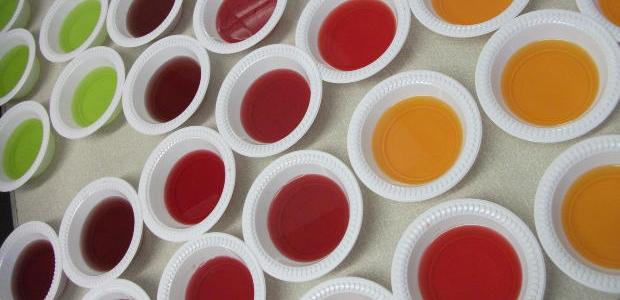Flotation therapy is an experience that used to be called sensory deprivation (but that sounds scary, so they don’t call it that anymore). The idea is that if you eliminate sensory stimuli, your brain relaxes, and so do you. As an introvert, this makes intuitive sense to me, and I wanted to try it.
Being overwhelmed with sensory input is exhausting, and blocking it out can be incredibly restful. It’s why I sleep with earplugs and an eye-pillow. Proponents claim flotation therapy promotes relaxation and reduces stress; can enable you to quickly reach brain states otherwise only found in deep meditation; can help reduce pain or heal injuries; and can increase focus and creativity.
I went to a local flotation spa and was shown into a lovely, private, soothingly-lit suite that included both a shower and the flotation tank. By the time I entered the suite I was starting to get a little anxious about this experiment, so atmosphere was everything. A glimpse of darkness or mildew, a whiff of junior-high-locker-room or mental-hospital-showers and I would’ve been gone. This said ‘spa’ in every detail.
I was given instructions and left on my own. Once I’d showered and put in earplugs as directed, there was nothing left to do but get in. I opened the tank door and slid feet-first into eight or ten inches of water exactly the temperature of my skin, so I was neither warm nor cold. I reached behind me, pulled the door closed, and stretched out. The water was infused with concentrated Epsom salt, so despite the low level of the water, I was floating – suspended.
For the first five minutes, I could see a little light around the edges of the tank door. This was a good transition; immediate total darkness would have been overwhelming. After five minutes, the motion-sensor lights in the room turned off, and all was dark. I am not at all claustrophobic, and I expected an ahhhh at this point. That never came; I really had to talk myself through staying in there once the lights went out.
I was anxious, so all kinds of chatter was happening in my brain. As I do when I’m nervous (and sometimes when I’m not), I began writing about this experience in my head. Once I realized I was doing that, I stopped and tried to focus on my heartbeat, or my breathing. I tried to meditate, which looked a lot like this. Since I didn’t feel relaxed, my inner perfectionist started in about how I was probably doing this wrong.
When my mental chatter finally quieted down, my body seemed to become very busy, even though I was not moving. Goosebumps rippling across the surface of my skin. Muscle twitches in my fingers, then in each arm and leg – even one of those whole-body startles that sometimes happens when you’re on the edge of sleep.
After a certain amount of time without input, the visual cortex starts to do funny things. I saw bright after-images, like you do when you close your eyes after a flash – except, of course, there had been no flash. Lights (which did not exist) blinked in the edges of my vision. I could not be sure if my eyes were open or closed.
While it seemed as though I had been aware the whole time, when the dim interior lights and gentle ocean sounds came on in the tank signaling the end of my hour, I felt as though I had just been awakened. Strangely, I was achy afterward; I had not been when I got in. Normally, Epsom salt baths are what I do for achiness; so this spoke to me of some kind of detox effect.
I felt good for the rest of the evening, alert, maybe a little keyed up. I slept well and felt fine the day after, but nothing out of the ordinary, either good or bad. I’m glad I did it, but I don’t know that I’ll do it again; it’s the same price as an hour of massage, which I seem to benefit from more directly.
And once again I’ve served my purpose: doing weird shit so you don’t have to!


